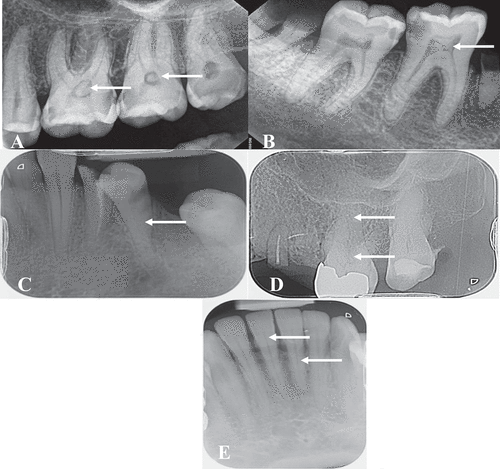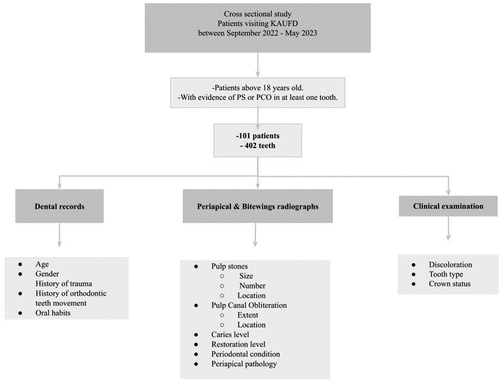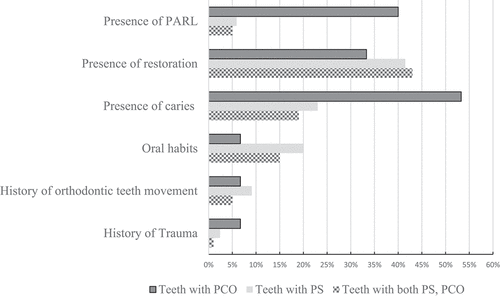Figures & data
Table 1. The distribution of pulp stones according to dental arches, sex, and location and teeth characteristics.
Table 2. Description of PCO and PS among examined teeth (n = 402); within the sample a total of 100 teeth exhibiting both PS and PCO.
Figure 2. Radiographic images showing pulp stone and pulp canal obliteration associated with different dental parameters.

Data availability statement
All data generated or analysed during this study are included in this article. Further enquiries can be directed to the corresponding author.


